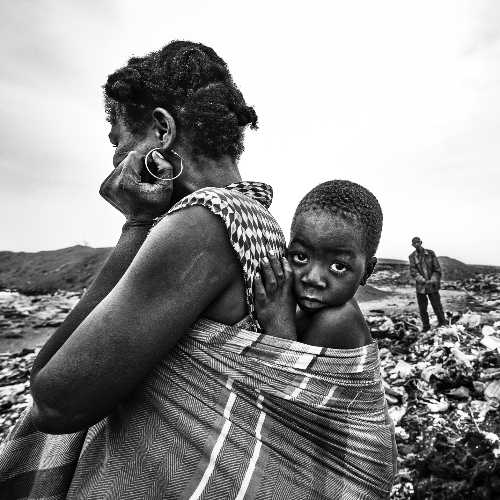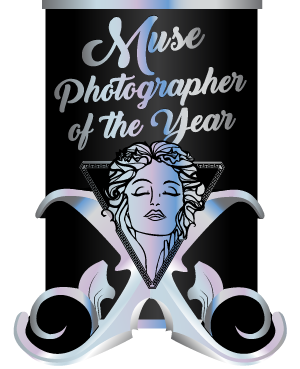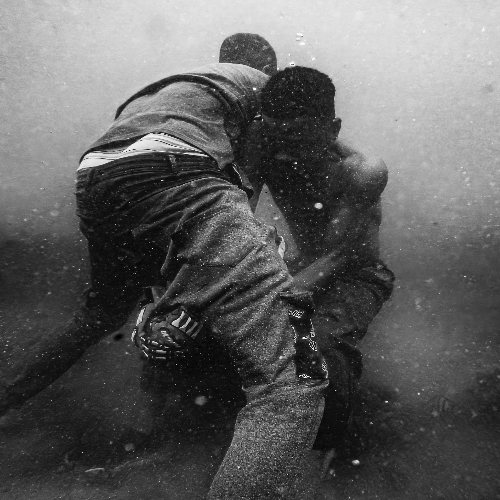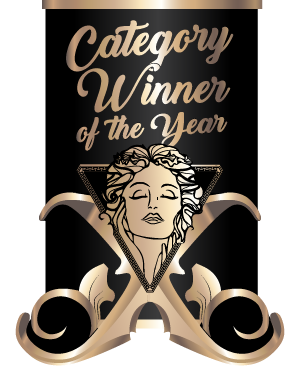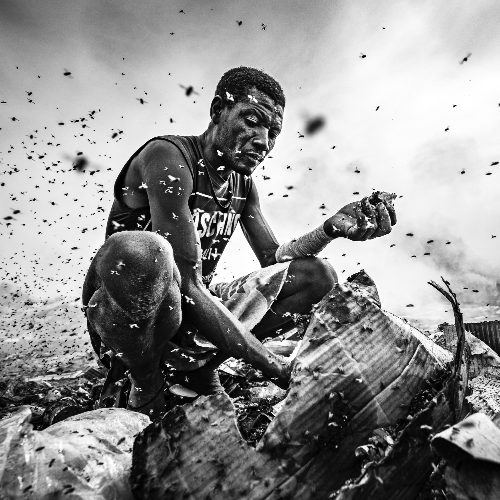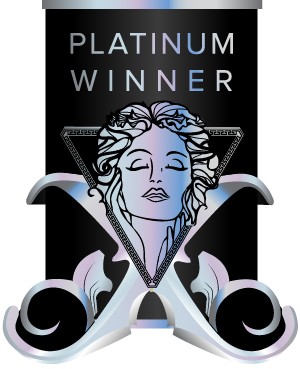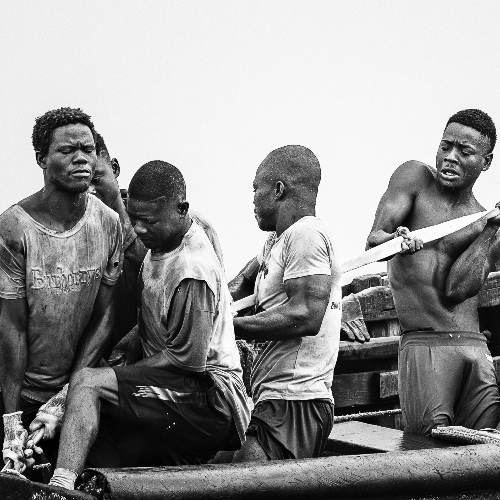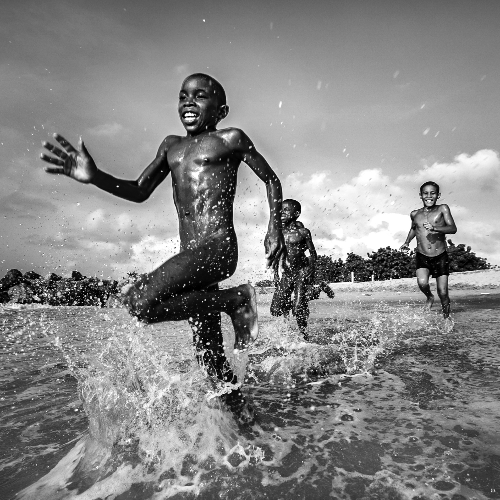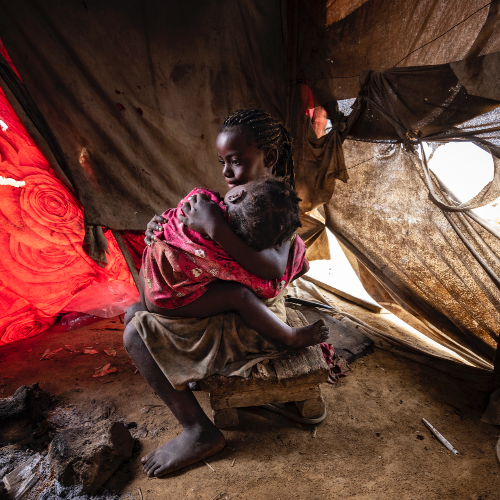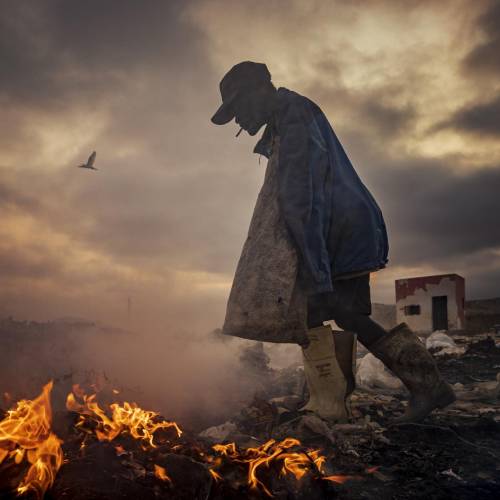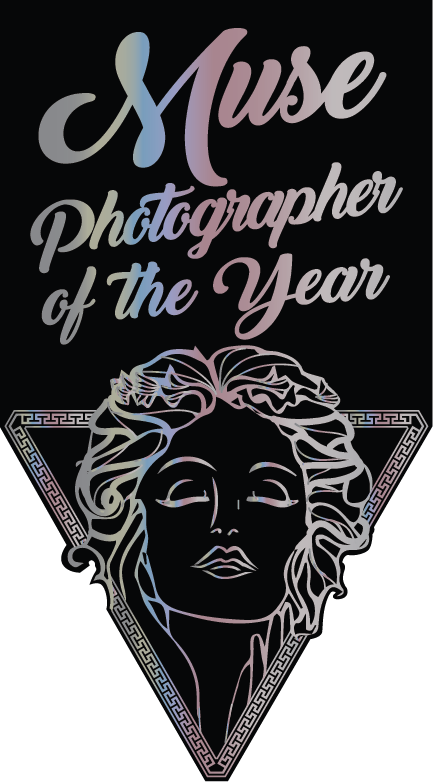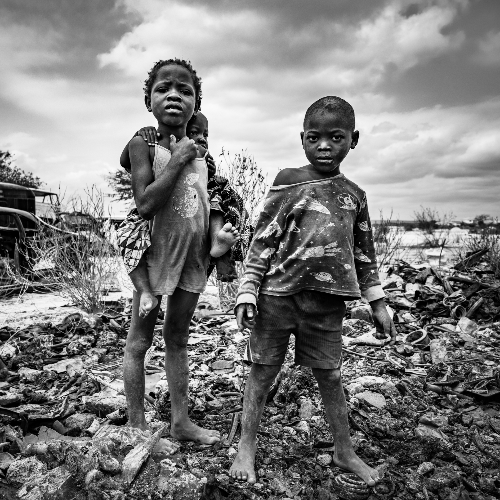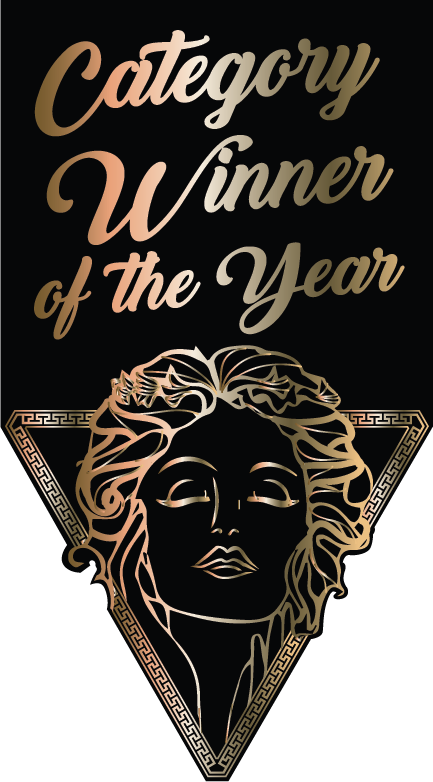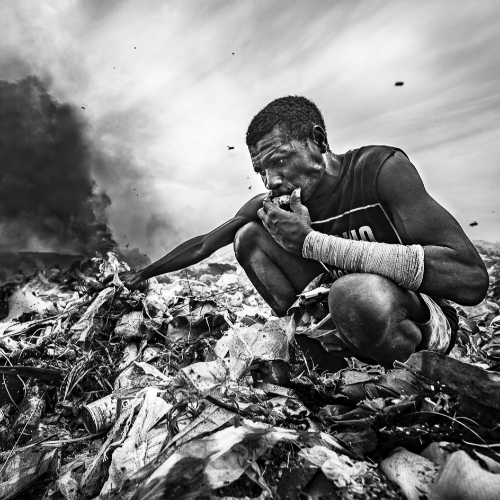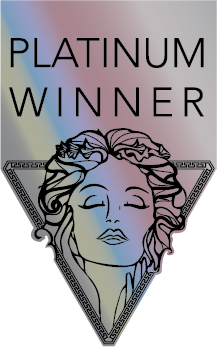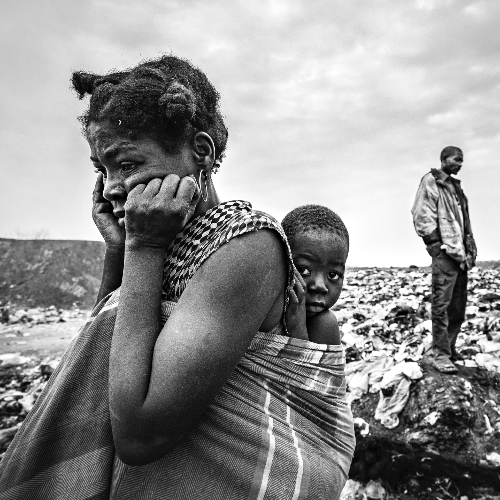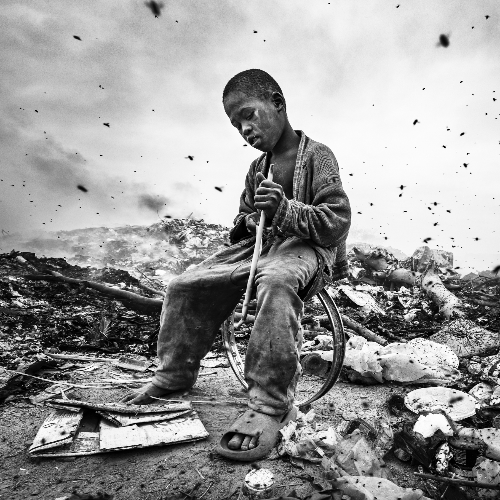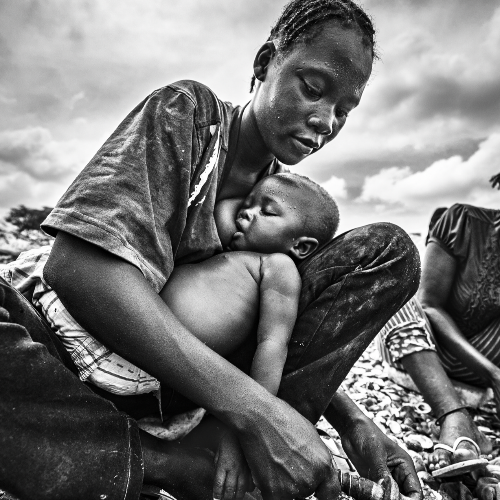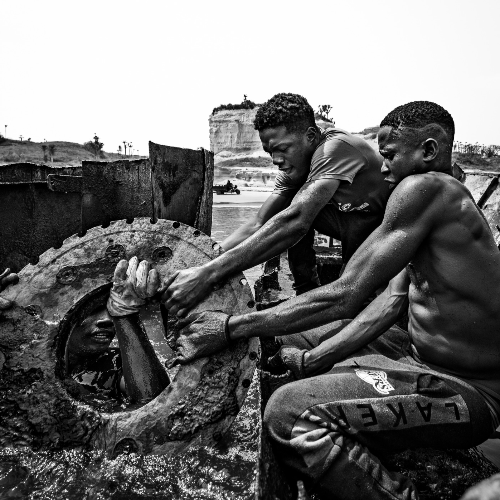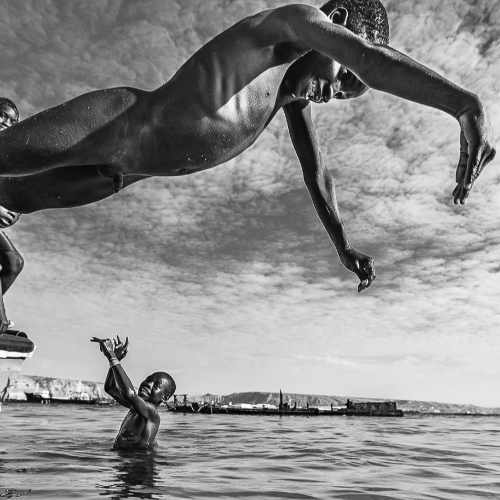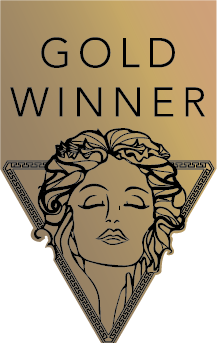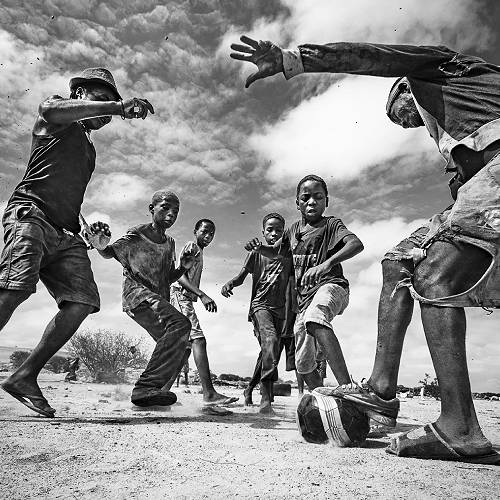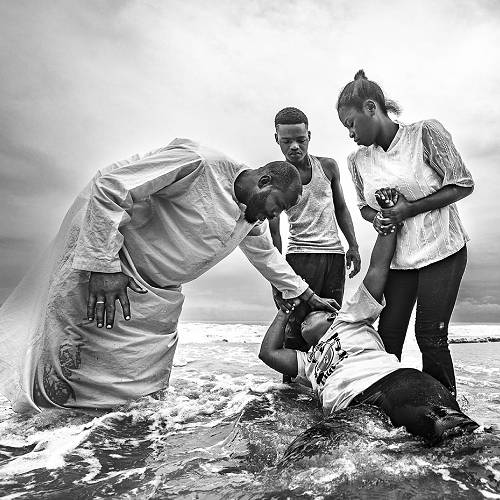
Interview
João Coelho
Portugal
João Coelho’s love for the arts began early, inspired by his painter parents. At 18, he bought his first camera and focused on portraits and landscapes, publishing in travel magazines. Returning to Angola, he started documenting the strength of people living in harsh conditions.
1 Congratulations on winning in the MUSE Photography Awards! Can you share a little about yourself, what inspired you to pursue photography, and how has your journey evolved since your first shot?
I've been drawn to the arts for as long as I can remember, influenced by my parents, who were talented portrayers and painters. My interest in photography began long before I ever picked up a camera. I remember spending long hours in bookstores after university, devouring photography books and magazines. My passion truly took shape when I finally bought my first camera at around 18 years old. I initially focused on portrait and landscape photography, publishing articles in leisure and travel magazines. I stopped shooting for several years due to work obligations, but when I returned to Angola—the country where I was born and left at age 11—I felt a strong urge to document people living and working in extreme conditions, fighting daily for survival. That’s how my journey into documentary photography began.
2 Can you share the story or inspiration behind your award-winning piece? How does winning this award make you feel about your journey in photography?
This work is extremely important to me, not only because of the photographs themselves but also because of the message they convey. The series portrays children born and raised in a dump—a sad, gray, monotonous world that forces them to grow up far too quickly. They work alongside their parents from morning until night, sifting through piles of trash for scraps of food, torn clothing, and pieces of metal and glass to sell. Most girls are forced to care for their younger siblings while their parents work, as if they were mothers before their time. They have no toys and no time to play. I saw vacant expressions and sadness on all their faces, as if they had already given up on being children. That’s why this series is a cry of revolt. Through it, I hope to raise awareness of how these children live and advocate for a fairer, more equal world—especially for them.
3 How do you decide which photo to submit for a competition?
Before selecting a work to enter into a competition, I first evaluate the competition itself. I consider whether my style of photography is represented, what the participation requirements are, and whether there is a specific theme. I also try to understand the selection criteria by reviewing previous winners. If I believe my work is a good fit, I choose photos that I think will capture the judges' attention. Beyond the technical aspects, I focus on selecting work that tells a compelling story or evokes emotion, as my photography leans toward documentary and photojournalism. For these styles, it's essential that the images speak for themselves and that the series presents a strong, coherent narrative around relevant social or environmental issues.
4 What first made you pick up a camera?
As I mentioned earlier, I've always been passionate about using photography as a form of artistic expression. This passion emerged in the pre-digital era, before the internet and smartphones existed, when photography was solely analog. When I bought my first camera, it was as if the world had opened up to me. I tried to replicate what I saw in photography magazines and books about the great masters. This inspired me to set ambitious goals and challenges for myself, which perhaps explains why I am still very demanding of my own work today. I increasingly consider the camera an extension of my body and soul because it's my chosen way to change the world with light.
5 What’s your favorite type of photography, and why do you love it?
A few years ago, I chose the path of documentary photography. It wasn’t a premeditated decision; rather, it was a natural progression in my career when I felt compelled to tell the stories of people living on the brink of survival. Even in these conditions, I discovered they could smile, help each other, and show affection and love for their children. They demonstrate enormous resilience and strength to live. Documentary photography became the ideal tool for studying the human condition. A photograph can make you cry, laugh, and think. It is a genre that can change things, people, and even the world itself. I often say it has a soul because you can see the photographer’s emotions, feelings, fears, anxieties, and hopes reflected in it.
6 What’s your go-to camera setup, and why does it work best for your projects? What’s your favorite feature?
Even when a documentary photographer or photojournalist carefully plans a project, they must be quick and efficient while shooting in the field because subjects and scenes usually unfold quickly. Therefore, they need to know their camera well and master the fundamentals of photography—especially the three pillars: ISO, shutter speed, and aperture—in order to anticipate the ideal settings for each shoot. I usually start by selecting an ISO based on the lighting conditions, then prioritize aperture. My work is defined by my close proximity to subjects, so I typically use a 16-35mm wide-angle lens.
7 If someone looked at your work, what’s the one thing you’d want them to feel?
I want them to experience the emotions I felt when I photographed a person or scene. If I achieve that, I will feel fulfilled as both a photographer and a person. As I said earlier, I consider documentary photography an extension of the photographer’s soul because he chose to capture that image at that moment, edited it a certain way, and decided to share it with the world to convey a unique message. Therefore, that image is his interpretation of reality and carries all of his emotions, including anxieties, worries, and joys. As Ansel Adams said, “A great photograph is one that fully expresses what one feels about what is being photographed.”
8 What was the most challenging part of capturing your winning shot?
As you can see from this series, all the images were taken in a landfill permanently covered in toxic fumes from fires set by piles of garbage. The site is also populated by swarms of flies that invade your eyes and mouth. Shooting in this environment is very difficult, and it makes me wonder countless times how people can live and work in these conditions. That’s why the hardest part of this series to capture wasn’t the smell, the heat, or the flies, but looking into the eyes of these children who were born here and know no other world than this one. Their gaze makes you feel guilty for not doing anything to help them have a better life.
9 Is there a specific place or subject that inspires you the most?
Surprisingly, the most beautiful places and themes don’t inspire me the most. For example, landscapes or beautiful, sophisticated people don’t inspire me. Rather, I’m inspired by places where people struggle to survive or face great difficulties living or working. There, I find unique stories of resilience, mutual aid, love, and even joy that often serve as examples for people living in modern, clean, and comfortable places. These people inspire me not only in my photography but also in the way I see the world and myself. I owe them a lot.
10 Who or what has been your biggest influence in photography?
Sebastião Salgado has been my greatest inspiration, both in photography and in the causes he has championed throughout his life. While other photographers such as Dorothea Lange, Walker Evans, Robert Frank, and Josef Koudelka have also influenced my career, Salgado’s work in Africa and his documentation of the precarious conditions in which people work worldwide remain my strongest influences.
11 What message would you share to inspire photographers to participate in photography awards, and what advice would you give to help them excel in the competition?
First, properly assess the competition’s theme and requirements to confirm your work’s eligibility and whether your photograph’s style aligns with the competition’s vision. Often, the decision to submit in color or black and white, or in certain categories, can determine the success of a submission. If you’re entering a series, it must make sense in terms of the theme and narrative you want to convey because the series is judged as a whole. I also recommend reviewing the winning entries from previous years to understand the level of quality required by the competition and the aspects highlighted by the jury.
12 What’s one piece of advice for someone just starting in photography?
First, you don’t need to spend a fortune on cameras and lenses to take good photos. These days, photographers are winning renowned competitions with cell phones or vintage analog cameras. On this subject, I’ll once again quote Ansel Adams: “The single most important component of a camera is the twelve inches behind it!” Second, learn the basics of photography: how ISO, aperture, and shutter speed interact with each other, and which to prioritize depending on the type of photography you’re doing. Third, take lots of pictures! Unlike in the days of analog photography, memory cards are almost inexhaustible. Only through practice will you consolidate your theoretical knowledge and learn to master your equipment until it becomes an extension of your body.
13 What role do editing and post-processing play in your creative workflow?
Editing and post-processing are fundamental to my workflow, and I invest a lot of time in them. Editing is an essential phase for any documentary photographer because they often can't control or influence the context of a quickly unfolding scene or story. Therefore, choosing the right image from a set of shots of the same subject or story can be crucial to achieving good results. As for post-processing, I understand its importance in black-and-white photography, which I find much more demanding than color photography. Often, good post-processing can transform an initially uninteresting shot into an appealing, strong image.
14 How do you see technology, like AI, influencing the future of photography and your own approach?
I think this question should be considered from two different perspectives. First, consider the influence of technology on photography equipment, which surprises us with new features and more advanced capabilities almost every year. While this is inevitable, I don't believe it significantly impacts photography as an art form. For one thing, analog photography continues to generate significant interest and can produce iconic images, especially in more creative forms of photography. Another issue entirely is the advent of AI. In my opinion, this is not photography, but rather another art form that uses digital AI tools to produce images based on reality. I'm very old school on this point because, as I've mentioned before, I believe photography is an expression of the photographer's soul. Through light, the photographer captures a particular scene he experienced, freezing in time everything he felt at that moment.
15 If you could photograph anything or anyone in the world, what would it be?
There are countless subjects I’d like to photograph, but first, I would choose a project about children in Africa and other regions who live or work in precarious conditions. Similar to the work that won another award program, I want to expose how these children have been forced to grow up too soon, how they go hungry in a world of abundance and waste, and how they have lost the sparkle in their eyes and the open, happy smiles found in any child. I understand that a documentary photographer must serve a greater purpose than merely documenting everyday scenes. He must strive to improve the world by conveying messages and warnings about social or humanitarian issues through his work.
